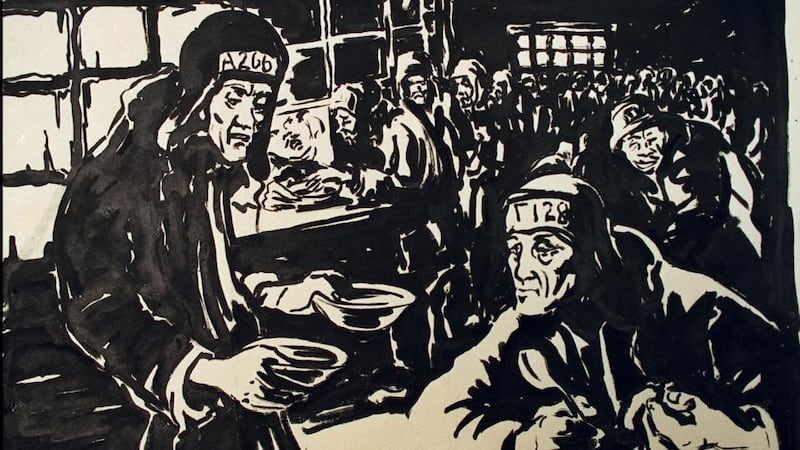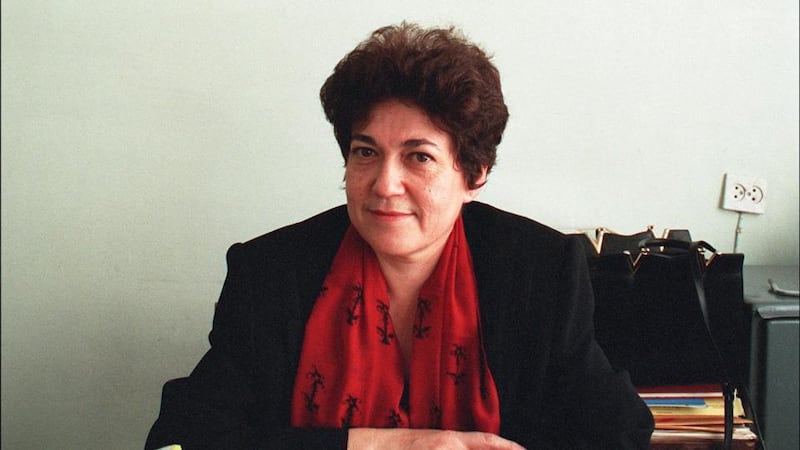Uzbekistan has fired the long-standing director of its renowned museum in Nukus, raising fears about the safety of a vast treasure trove of art housed in one of the remotest galleries in the world.
The Uzbek ministry of sport and culture forced Marinika Babanazarova to resign last week without explanation. Claims that she had stolen works from the collection and replaced them with fakes have been circulating in the central Asian country in recent weeks. Babanazarova has denied the accusations.
Known in international art circles as the "Louvre of the Steppes", the Karakalpakstan State Museum of Art houses the collection of Igor Savitsky, a Russian painter who rescued tens of thousands of artworks from destruction by Soviet censors and squirrelled them away in the remote capital of Uzbekistan's Karakalpakstan region.


Before his death in 1984, the Savitsky estate entrusted Savitsky’s collection to Babanazarova, who has guarded his bequest ever since.
Open dissent is rare in Uzbekistan, where the government has a brutal record for repression and torture. Yet the entire staff of the museum rose to Babanazarova’s defence last week, demanding the reinstatement of their boss and insisting that Savitsky’s collection had not been tampered with.
Events took an ugly twist at the weekend, when Babanazarova revealed she had agreed to resign under pressure from the local authorities in Karakalpakstan. “I was under duress and in a nervous state,” she told Uzbekistan’s culture minister in a letter posted on Facebook on Saturday.
Nothing to lose
Babanazarova was behaving as if “she had nothing to lose”, said
Andrey Volkov
, a Moscow- based artist whose grandfather, the late
Alexander Volkov
, was the author of more than 80 valuable paintings stored in the Nukus museum.
“People in Uzbekistan are afraid even to think negative thoughts about the authorities, let alone publicly criticise,” Volkov added.
Born into an aristocratic family in 1915, Savitsky trained as an artist in Moscow when Russia was at the forefront of the experimental art movements sweeping Europe. After dictator Josef Stalin came to power, the authorities began enforcing state-approved socialist realist art that glorified the achievements of the world's first communist state.
Many of the leading lights of the avant-garde, Futurist and Constructivist movements were branded as “enemies of the people” and arrested or driven underground.
Savitsky scoured the country for hidden art, often buying works from the families of convicted artists who had disappeared into the Soviet gulags.
After visiting Karakalpakstan on an archeological mission in the 1950s, he decided to settle in Nukus. Sitting in a desert that was used by the Soviets as a biological weapons testing ground, the remote city barely attracted the attention of censors.
Over the years, Savitsky’s collection grew into an eclectic mix of more than 90,000 works. These include ancient central Asian textiles and jewellery as well as what is now the largest body of Russian avant garde paintings outside Saint Petersburg’s Russian museum.
Lost art
It was only after the collapse of the
Soviet Union
that the Nukus museum became known to the outside world and international art experts began discovering the lost history of Russian modern art.
Security immediately became a consideration. The Friends of the Nukus Museum, an organisation established with the support of the World Bank and the Soros Foundation in the 1990s, warns on its website that Savitsky's collection could be a "lucrative target for corrupt bureaucrats and art profiteers".
Babanazarova, the daughter of the first president of Karakalpakstan, has guarded Savitsky’s bequest tenaciously and worked hard to raise the international profile of the museum.
On the eve of her ousting, she was preparing to welcome diplomats and art experts at a series of events to mark the 100th anniversary of the artist’s birth.
The dismissal of Babanazarova was a “very big mistake”, said Tair Tairov, a Moscow- based central Asian art expert and collector. “She is a law-abiding person whose life’s work has been to protect the Savitsky collection.”
Foreign visitors
Uzbekistan has grown increasingly alarmed by the large numbers of foreign tourists visiting the museum in Nukus, according to political commentators. The government has cracked down on a separatist movement in Karakalpakstan, which it says has been encouraged by meddling western powers.
Babanazarova’s independent policies have won her admirers in the international art world, but in Tashkent, the Uzbek capital, she was regarded with suspicion and envy, said Tairov. Several leading Uzbek art academics had long coveted the prestigious job at the museum and may have engineered her downfall.
According to Uzbek law, Babanazarova has two weeks to reconsider her resignation. But Tairov believes the Savitsky collection has lost its protector.
"I am afraid the Uzbek security services may launch criminal proceedings against Ms Babanazarova, " he said.









